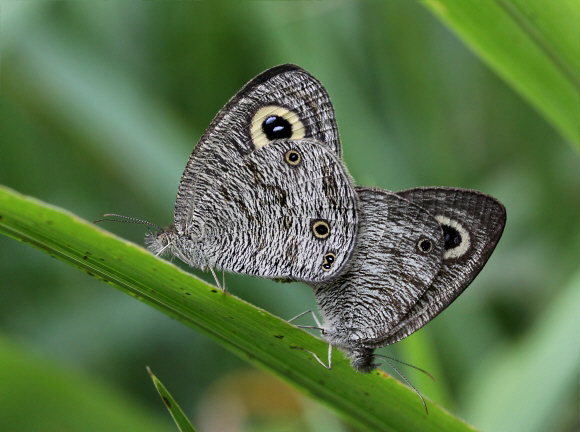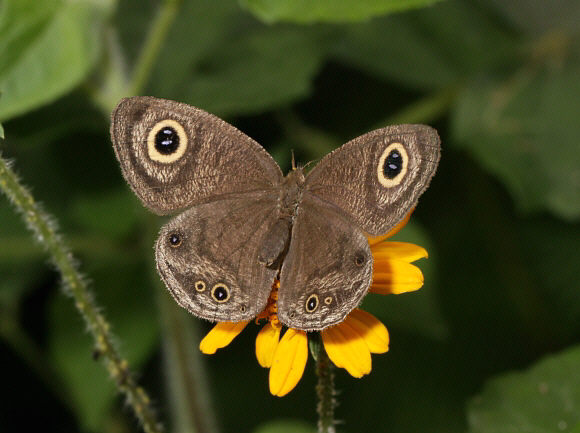
Introduction
The genus Ypthima comprises of 108 currently described species. 16 of these are restricted to the Afrotropical region; one is found only in Australia and Papua New Guinea; and the remainder are mostly found in various parts of the Oriental region. Additionally there is a single very widespread species asterope, which is found in sub-Saharan Africa, Arabia, Turkey, Lebanon and India.
The butterflies are instantly recognisable as a group, all being marked with fine striations on the underside, and possessing a submarginal series of yellow-ringed black ocelli.
There are 19 species found in the Afrotropical region, of which doleta is the one of the commonest and most widespread, being found from Sierra Leone to Angola and northern Tanzania.
Habitats
This species is found in grassy areas including degraded forests, where it breeds along the edges of grassy tracks and roadsides.
Lifecycle
The larval foodplants are grasses, of which several species are probably used.
Adult behaviour
This species breeds in small colonies of up to 100 or so butterflies. Like other Ypthima species it is active in overcast conditions as well as in sunny weather.
Both sexes can commonly be seen flying among grasses or nectaring at marigolds and other wild flowers. They usually keep their wings erect for a few moments after settling but if undisturbed will gradually open them, and in warm overcast conditions it is not uncommon to find them with wings fully outspread.

